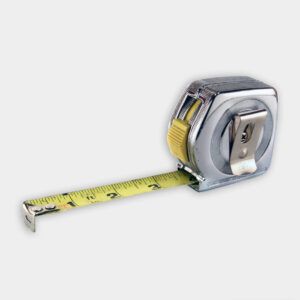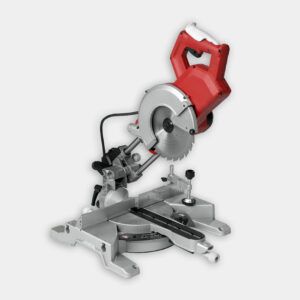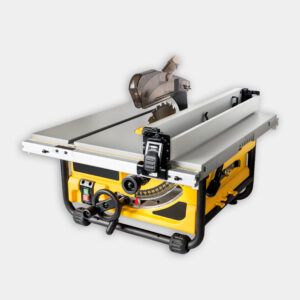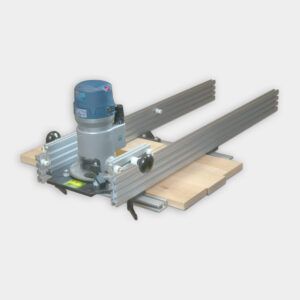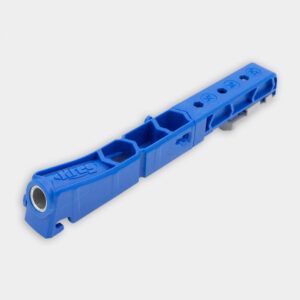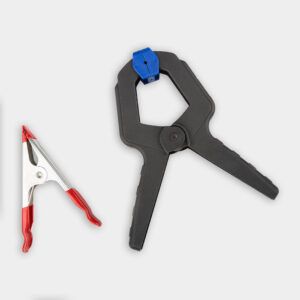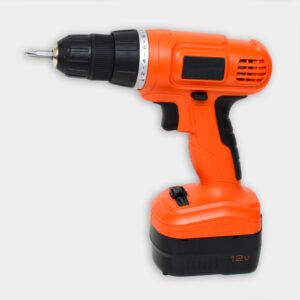A Shaker table’s simplicity makes it a fun project for both novice and experienced woodworkers. We follow This Old House’s Kevin O’Connor as he takes us to the workshop of Decatur Maker’s Char Miller-King where she helps him build a Shaker-style table. After showing O’Connor how she simplifies the complicated aspects of the project, the two build a sturdy Shaker end table from walnut. See how to do it below.
Materials and Tools for a Shaker End Table
You’ll need these materials:
- Drawer knob
- Pocket screws
- Tabletop hardware (figure-8 fasteners)
- Walnut boards (or wood of your choice)
- Wood glue (dark-colored for walnut)
- Wood screws
- 1/4-inch plywood (for drawer bottom)
Have these tools on hand:
- Block plane
- Combination square
- Drill and screw guns
- Miter saw
- Planing jig
- Pocket hole jig
- Table saw
- Tape measure
- Tapering jig
- Various clamps
Preparing the Wood for Your Shaker End Table
The first step in creating your Shaker end table is preparing the wood. This involves cutting and shaping the various components that will make up your table.
Cutting the Legs
Measure and mark the board for the legs, then cut the board to length using a miter saw. Use a planing jig to flatten one edge on the table saw. Adjust the table saw fence and cut four square legs to the desired width.
Tapering the Legs
Tapered legs are a hallmark of Shaker-style furniture. King demonstrates a simple method using a tapering jig. You’ll choose where the taper will start (slightly lower than the apron height), then mark across the faces of all legs with a combination square. Clamp each leg into the tapering jig using the mark for reference. Taper two adjacent sides of each leg on the table saw.
Creating the Apron and Drawer Front for a Shaker End Table
The apron not only adds structural support but also houses the drawer, a key feature of this end table. Taking time to craft these parts correctly ensures that your table will have both form and function.
Cutting the Apron Pieces
Cut the apron stock to the desired width on the table saw. Also cut four apron pieces to length on the miter saw. Select the best-looking piece for the drawer front. Rip the drawer front piece into three parts: two narrow strips for the apron and one wider piece for the drawer front.
Preparing for Assembly
Use a pocket hole jig to drill pocket holes at the ends of each apron piece. Ensure you drill on the inside of the boards to maintain consistent grain patterns.
Assembling the Shaker End Table Frame
With all the pieces cut and prepared, follow these steps for a sturdy construction.
Attaching the Apron to the Legs
Apply glue to the edges of the apron pieces. Place two legs with one apron between them on the work surface. Use 1/4-inch scrap pieces to elevate the apron from the work surface. Clamp the legs to the apron and drive pocket screws to secure.
Repeat this process for the remaining three sides.
Installing the Drawer Front
Position the drawer front between the upper and lower apron pieces. Place strips of paper between the drawer front and aprons to create a small gap. Glue and screw the aprons in place.
King emphasizes the importance of allowing for wood movement, particularly in humid climates. This attention to detail ensures that your table will remain sturdy.
Constructing the Drawer for Your Shaker End Table
Here’s how you’ll create the table’s drawer.
Building the Drawer Box
Cut the drawer box parts to width and length on the miter saw. Create a dado cut on each piece to accept the drawer bottom. Cut a piece of 1/4-inch plywood to fit in the dado. Assemble the drawer box without glue to allow for movement. Lastly, attach the drawer front and knob.
Installing Drawer Guides
Create L-shaped drawer guides from offcuts, then attach the guides to the inside of the table with screws.
King notes that she avoids using glue on the drawer to allow for wood movement, maintaining the drawer’s smooth functionality.
Creating and Attaching the Tabletop
The tabletop is the crowning piece of your Shaker end table, and its construction is crucial to the overall look and durability of the piece. The right materials and techniques ensure it’s both beautiful and long-lasting.
Preparing the Tabletop
Glue up three pieces of walnut, each about 5 inches wide, to create the table’s top. Once dry, cut all four sides at a 35-degree angle on the table saw. Use a block plane to chamfer the edges and clean them up.
Attaching the Top
Use figure-8 fasteners to attach the top to the table frame. This method allows for wood movement as seasons and humidity levels change.
Finishing Touches for a Shaker End Table
The final steps in creating your Shaker end table involve sanding and applying a finish to protect the wood and enhance its natural beauty. These final touches make a worthwhile difference in the table’s appearance and longevity.
Sanding
Start with a coarse-grit sandpaper and work your way to finer grits. Pay special attention to the tabletop and any areas that will be frequently touched.
Applying Finish
King suggests using an oil-based finish to bring out the beautiful grain of the walnut. To do that, clean the table thoroughly to remove all dust, then apply the finish according to the manufacturer’s instructions. Allow adequate drying time between coats, and buff the final coat for a smooth, lustrous finish.
Alternative Materials for a Shaker End Table
While walnut is a beautiful and durable wood, you can use other materials to create the look you want. Below are some other options that would work for this kind of table.
Cherry
Cherry wood has a rich, warm color that deepens with age. It’s easy to work with and gives off a classic look.
Maple
Maple is a lighter wood with a smooth grain, offering a versatile appearance that can be stained or left natural. Its hardness adds to the table’s durability.
Oak
Oak’s distinctive grain and toughness make it a popular choice for furniture. It has a rustic appeal and can be finished in various shades.
Adding Unique Design Elements to Your Table
Incorporating distinctive design features can take your Shaker end table to the next level. Below are some ideas.
Decorative Inlays
Adding decorative inlays, such as contrasting wood or metal, can enhance the look of your table. These inlays can be as simple or intricate as you like.
Unique Knobs
Choosing a unique knob for the drawer front can add a personal touch. Consider materials such as glass, ceramic, or custom metalwork for an eye-catching detail.
Custom Finishes
Experiment with different finishes to achieve the desired look. A distressed or antiqued finish can give the table a vintage feel, while a high-gloss finish offers a modern touch.
